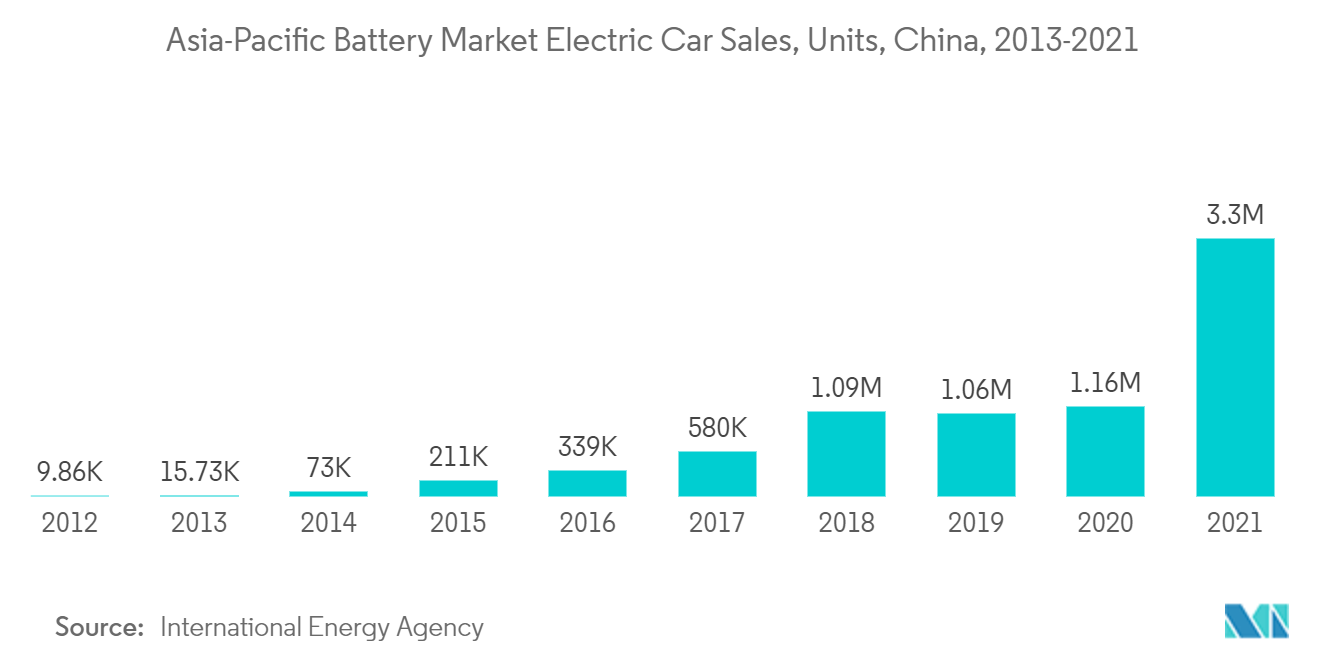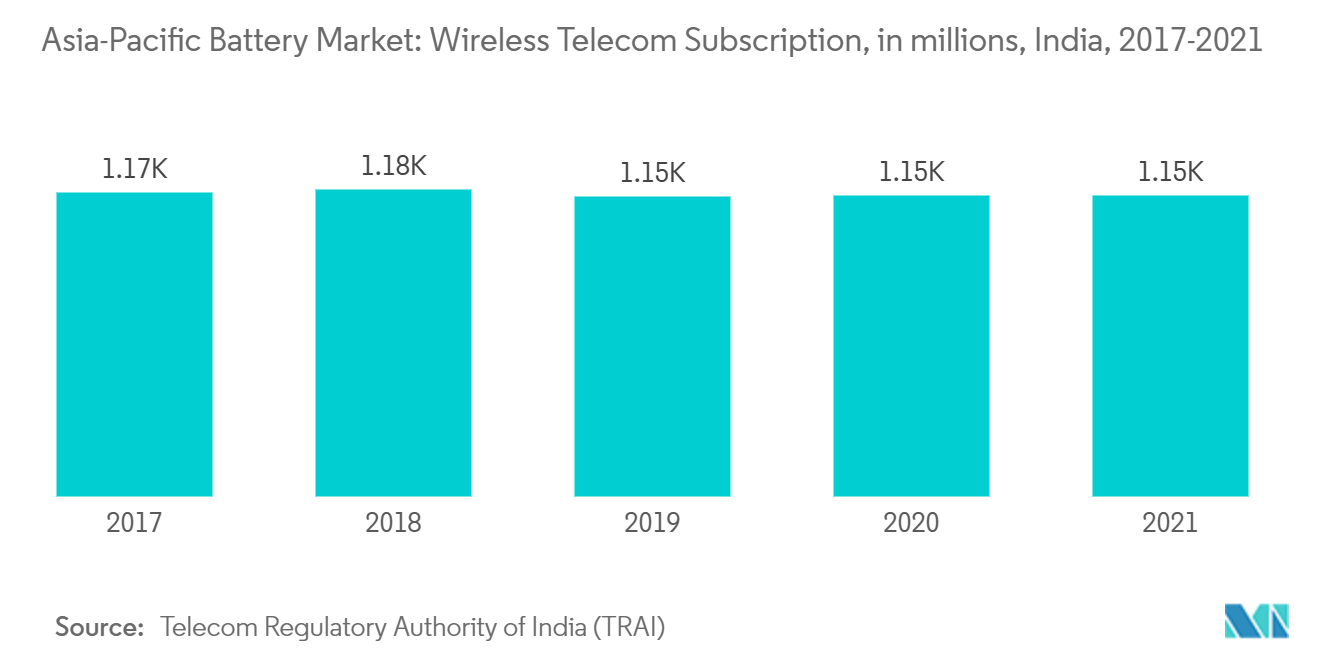Market Trends of Asia-Pacific Battery Industry
This section covers the major market trends shaping the APAC Battery Market according to our research experts:
Automotive Battery Segment to Witness Significant Growth
- The automotive sector is anticipated to be one of the major end-user segments for lithium-ion batteries in the future. The penetration of electric vehicles will likely provide a massive impetus for the lithium-ion battery industry's growth.
- Different vehicle types are now available globally, featuring increasing degrees of hybridization and electrification, such as Hybrid Electric Vehicles (HEVs), plug-in hybrid electric vehicles, and Electric Vehicles (EVs).
- In developed and developing economies, the adoption of electric vehicles is increasing at a high rate. China is leading in global EV sales, and other developing economies like India are transforming their public transportation infrastructure for EVs.
- In the current market scenario, policy support plays a crucial role in driving the adoption of electric vehicles. Policy support enables market growth by making vehicles appealing to consumers, reducing risks for investors, and encouraging manufacturers to develop electric vehicles on a large scale.
- Falling battery prices and improving technology are expected to bring price-competitive electric vehicles to the market, creating demand for battery technologies.
- The global production of batteries for electric vehicles is concentrated in Asia-Pacific, with Chinese, Japanese, and South Korean companies dominating the sector and building factories in Europe to conserve their supremacy. As of 2021, China was the largest market for electric vehicles, as the country accounted for approximately 3300000 vehicles sold. The country is also making efforts to reduce air pollution levels, which is further expected to push the automotive battery segment.
- The Indian government has taken several initiatives to promote electric vehicles. In April 2019, Phase II of the Faster Adoption and Manufacturing of (Hybrid &) Electric Vehicles (FAME) India scheme was implemented for three years. The scheme's main objective is to promote faster adoption of electric and hybrid vehicles by providing an incentive for the purchase of electric vehicles and creating necessary charging infrastructure for electric vehicles, thereby boosting the automotive battery segment.
- The FAME India Scheme (which started in April 2019) was supposed to end by 2022. However, with the approval of competent authorities, the union government, in June 2021, decided that the FAME India Phase II Scheme will be extended for two years, i.e., up to March 2024. In Q1 of 2021, the union government increased incentives on electric two- and three-wheelers to help boost broad-based adoption. According to some industry experts, the government wanted to utilize the funds earmarked for the FAME scheme, with the sale of EVs remaining muted for the past two years.
- Thus, the automotive battery sector will likely witness significant growth with the increasing adoption of electric vehicles.

India to Witness Significant Growth
- Asia-Pacific has multiple growing economies with substantial natural and human resources. India is expected to become a major investment hotspot for battery companies in the coming years, based on the policy-level support from the governments encouraging the manufacturing sector.
- The Indian market is driven by increasing population, urbanization, declining cost of electronic items, the introduction of new smart technologies, and availability of the internet at a cheaper cost. Replacement of older smartphones with newer ones is also expected to drive the market's growth.
- The increasing penetration of telecommunication services provides an opportunity for the growth of the telecommunication market in India. Therefore, with the increase in subscribers, the requirement for telecommunication towers in the country is expected to increase, further fostering the demand for batteries required for backup purposes.
- India is among the top five emitters of CO2 in the world. To mitigate the problem of air pollution, the government has taken the initiative to implement policies favorable to increase the EV fleet count on the road.
- The government has clarified that entities planning to set up EV charging stations may not require licensing from the ministry. The Indian government also set an ambitious target of new vehicles sold after 2030 to be fully electric. Such initiatives are expected to drive the demand for batteries in the country.
- India has more than 50% of telecom towers located in sites that face outages for 8 hours a day or more. The telecom industry players must maintain an uptime of 99.5% or face penalties. As a result, the towers are heavily dependent on diesel generators. The telecom industry is moving toward renewable sources, particularly solar, in tandem with battery energy storage systems to reduce greenhouse emissions.
- To this effect, in February 2020, the Indian Department of Telecommunications issued directions to the telecom service providers to use renewable energy solutions and energy-efficient technologies, thereby boosting the Indian battery market.
- Hence, due to such factors, India is expected to witness significant growth in the Asia-Pacific battery market during the forecast period.

